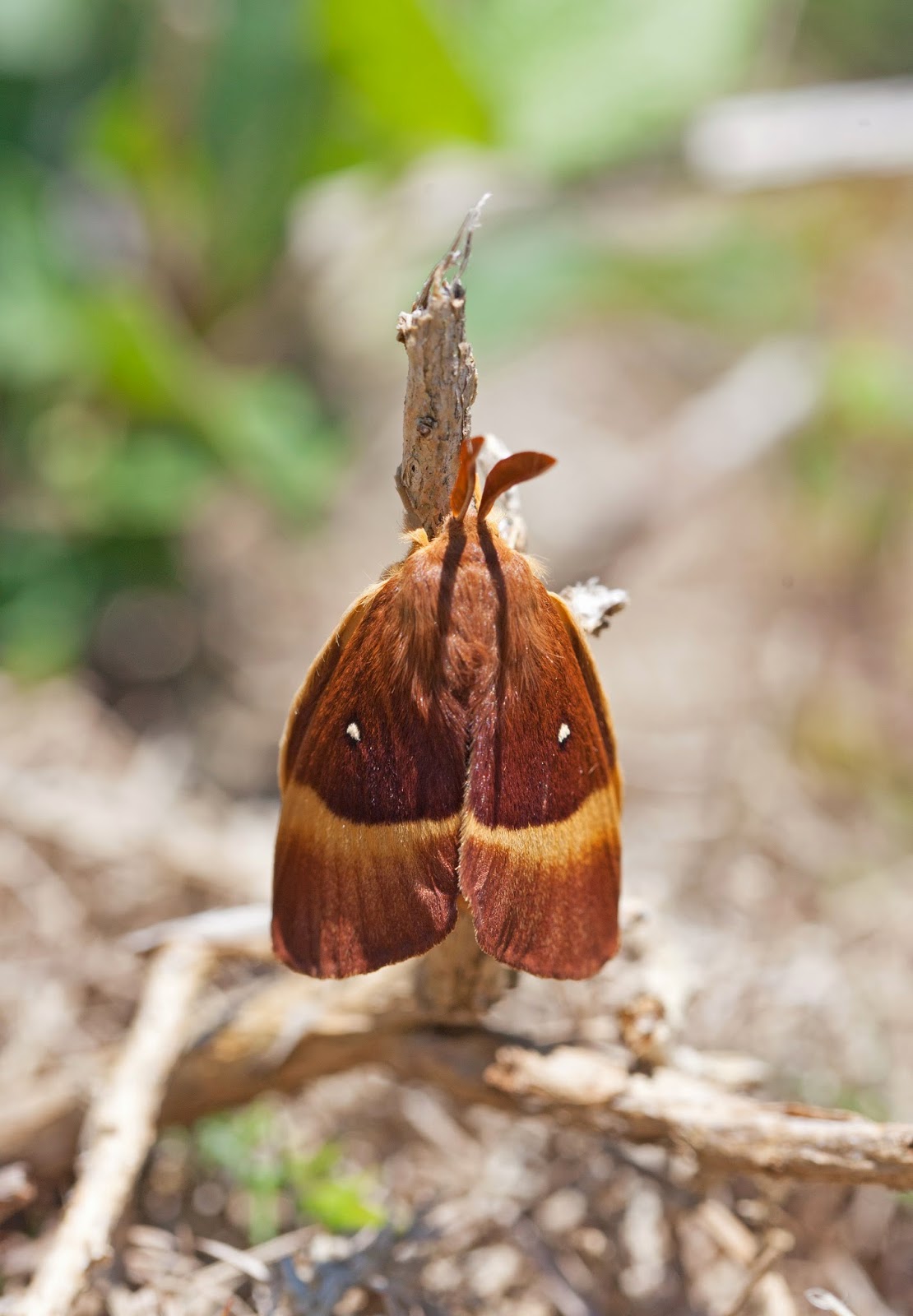 |
| Cryptic colouring provides excellent camouflage. |
 |
Suddenly we had our "eye in "and it became obvious that there were plenty about. We estimated 10 plus on our BC Sussex report, of course being cautious, but at one time there were five in the air immediately in front of us. A more reasonable estimate would be 20, in a tight area below the coppice. Some were showing wear and I would think they have been on the wing for some considerable time, this fact reinforced by some specimens carrying Trombidium larvae. Getting good shots of Graylings is a difficult process, on bare chalky earth they are hard to isolate from the background and when they set down in the grass there is inevitably something in the way of a clear shot. However, we managed to satisfy our requirements for a good shot and we retreated back up the hill to the vicinity of the water trough, in the hope of getting some more Wall shots. On the path something caught Martin's eye, this turned out to be the shot of the day, a pair of Graylings mating.
During a break in the proceedings Martin discovered a freshly emerged male Oak Eggar moth, which, even in its fairly immobile state, proved difficult to capture properly.
 |
| Martin's favourite butterfly |
On the way back to the car park a single Grayling alighted on the path. A welcome sight, but in truth we were just too "cream crackered" to chase it. Also ,on the downward journey, we noticed that "aliens" had created a crop circle in an adjacent field. Having gone to all that trouble why didn't they conceal their tracks into the field, or maybe it was the path the occupants took when leaving their space vehicle - by the way - I do not condone vandalism.
Today was more of the same - a hunt for a fairly scarce butterfly. A report of Silver-spotted Skippers being seen at Newtimber Hill near Poynings in East Sussex had us, yet again, climbing upwards on The Downs. Success in discovering a single specimen, but failure to capture a decent record. Just a few hasty shots were all I could manage before the subject did a vanishing act.
Another Small Copper...
.... but his one turned out to be an aberrant form...Small Copper, Lycaena phlaeas ab. caeruleopunctata
 |
| Note the blue spots on the hindwings |
I came across this long deceased fungus, it looks like the remains of a Mosaic Puffball, Handkea utriformis, that sent its contents skywards sometime in late autumn last year. Research on-going.
Although we spent several hours searching, finding another specimen of S-sS proved impossible and, as previously, we were at a new venue which made it the proverbial needle in the haystack. So we retired gracefully and decided to have a look at Chantry Hill in the hope that they had emerged there.
On the path to Chantry the Dark Green Fritillaries were making the most of a stand of Creeping Thistle, as at other venues most of them past their best. Oddly enough, the Marbled Whites, by contrast, appeared much fresher. Plenty of Skippers about, sadly none of them of the Silver-spotted variety.














Nice set of Butterfly pics from your day out Dave.
ReplyDelete